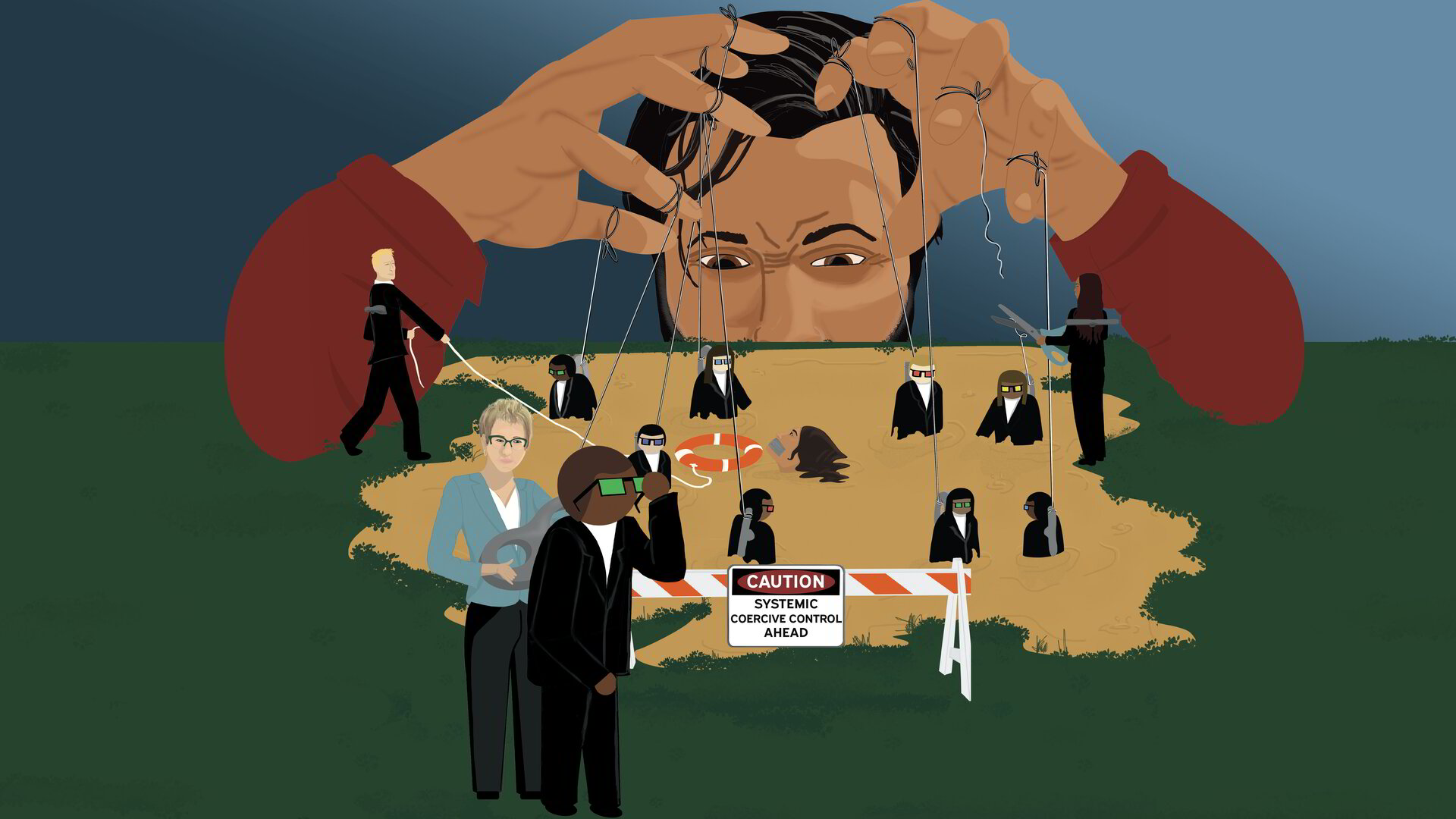
Coercive controllers are the puppeteers of manipulation! Every strategy they employ against their chosen victims at the start of the "relationship" to fabricate The Mirage, is also utilized on friends, family, and anyone within their surrounding circle. The implementation of these coercive control tactics usually intensifies when their main target begins to comprehend the abuse. However, there's no doubt, the coercive controller has likely been practicing manipulation and deceit from the get-go.
Cunning coercive controllers understand that no one relishes the experience of abuse, and when their control over their primary target strengthens, this person may begin to resist the abusive behaviors causing them harm and/or distress. As a result, they often introduce the Double Team strategy early on, in an attempt to thwart any possible escape plans by their main target.
In my paradigm, The Quicksand Model™, I've coined the term Double Team for a specific tactic often seen in manipulative relationships. Interestingly, this tactic is colloquially known as deploying flying monkeys, a term inspired by the minions in The Wizard of Oz. The concept of "flying monkeys" or Double Team, as I prefer to call it, is generally associated with a form of psychological manipulation termed narcissistic abuse.
Though I acknowledge the term narcissistic abuse can be enlightening for victims, helping them comprehend the intricate methods their manipulators employ, an overemphasis on psychological terms like narcissism, psychopathy, or sociopathy can inadvertently limit our understanding. Such a narrow focus might overlook other equally important aspects of manipulative behavior, especially a pattern of coercively controlling abusive behavior. Hence, I prefer referring to these patterns not as traits of a specific disorder, but as tactics, strategies, or tell-tale signs of coercive control. Through this lens, we can appreciate the broader spectrum of manipulative behavior and its effects on victims, while avoiding the problematic issues that can arise from viewing a person's abuse through a diagnostic lens.
I refer to 'The Double Team' as the tactic used by a coercive controller to manipulate others into believing negative things about the target, with the intention of isolating the victim, making them appear psychologically unsound, or discrediting them in some way. The coercive controller employs this Double Team strategy to evade responsibility for their abusive actions. The presence of the Double Team is a major red flag for coercive control and its deliberate nature. This is because it often starts while the coercive controller still maintains a facade of being actively involved in the "relationship" (I'm hesitant to label these situations as genuine relationships, as they echo more of a captive scenario) with their targeted victim.
In a harmonious relationship, partners refrain from negative talk about each other. They champion one another and always extend the benefit of the doubt. They lend support to their partners in the pursuit of their dreams, and they communicate positively about them to others. When their partner is unwell or fatigued, they respond with kindness, empathy, compassion, and attentive care.
On the contrary, in a situation that only resembles a relationship in name , the victim often experiences derogatory talk from their coercive controller, usually behind their back and often well before the "relationship" breaks up. This sly and manipulative method, designed to inflict harm on the partner unknowingly and sever them from external support, unveils the intentional nature of what I refer to as the Double Team.
The Double Team isn't the sole maneuver used in coercive control that exposes the intentional characteristic of this behavior. Other signs of coercive control under The Quicksand Model™ – like Double Standards, Double Binds, Double Speak, Double Cross, Double Down, and DARVO (the D's) are equally deliberate. The same applies to the The F's of Force, Fraud, and Fear.
Certain indicators may be more discreet than others, which can make it tougher to discern their purposeful intent. However, once you identify that multiple tactics are being deliberately used to control or dominate you, it's safe to assume that even the less conspicuous behaviors also serve the same purpose.
